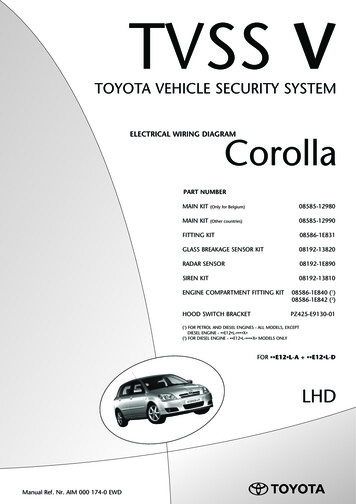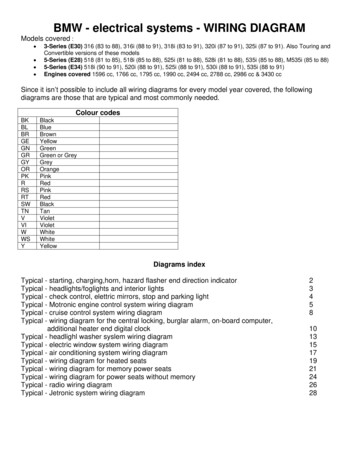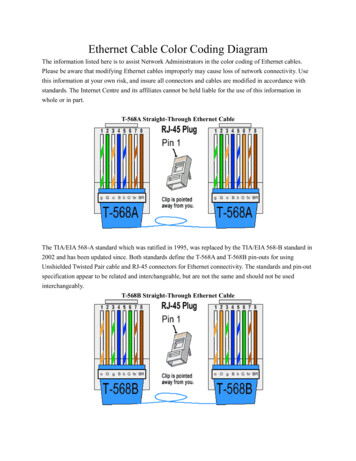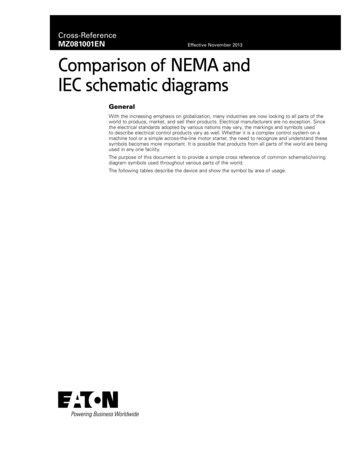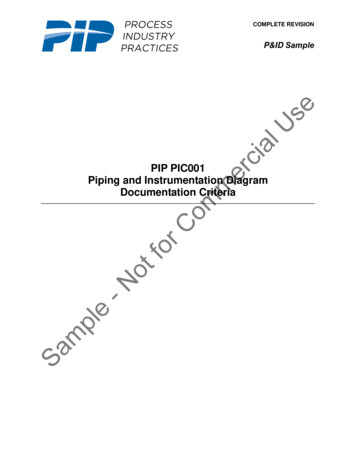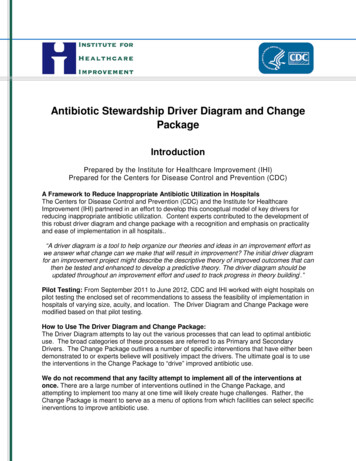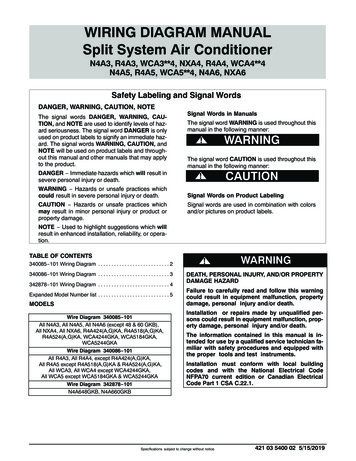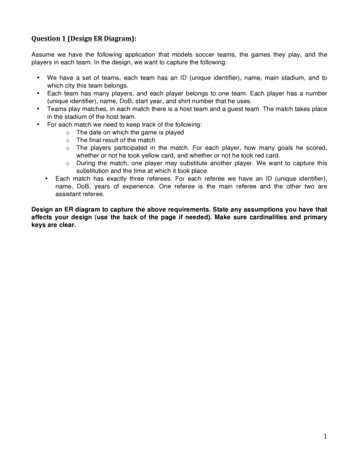
Transcription
Question1(DesignERDiagram):Assume we have the following application that models soccer teams, the games they play, and theplayers in each team. In the design, we want to capture the following:We have a set of teams, each team has an ID (unique identifier), name, main stadium, and towhich city this team belongs. Each team has many players, and each player belongs to one team. Each player has a number(unique identifier), name, DoB, start year, and shirt number that he uses. Teams play matches, in each match there is a host team and a guest team. The match takes placein the stadium of the host team. For each match we need to keep track of the following:o The date on which the game is playedo The final result of the matcho The players participated in the match. For each player, how many goals he scored,whether or not he took yellow card, and whether or not he took red card.o During the match, one player may substitute another player. We want to capture thissubstitution and the time at which it took place. Each match has exactly three referees. For each referee we have an ID (unique identifier),name, DoB, years of experience. One referee is the main referee and the other two areassistant referee. Design an ER diagram to capture the above requirements. State any assumptions you have thataffects your design (use the back of the page if needed). Make sure cardinalities and primarykeys are clear.1
ExpYearsIDDoBRefereeisMainstadiumname(3 3)roleIDcityhostdateMatchTeamnameHost- ‐scoreguestguest- ‐scorebelongsinMatchIDnumGoalsPlayerDoBMatch- rtNumSubtimeAssumptions:1- ‐ InMatch- recordID.2- ‐ tributesHost- ‐scoreandguest- ‐score3- ‐ se,itw illbefalse.2
Question2(RelationalModel):Map the ERD in Question 1 to create the relational model corresponding to the describedapplication. Basically, list the CREATE TABLE statements with the attribute names, andappropriate data types. Also make sure to have the primary keys and foreign keys clearlydefined (use the back of the page if needed).** In your exam, I will not ask for Create Table statements, I will ask only for R(A1, A2, D),Date:date,Host- ‐score:int,Guest- D,Date,RefID);CreateTableMatch- Boolean,subID:intForeignKeyReferencesMatch- 3
Question3(RelationalAlgebra):Consider the following relations:Doctor(SSN, FirstName, LastName, Specialty, YearsOfExperience, PhoneNum)Patient(SSN, FirstName, LastName, Address, DOB, PrimaryDoctor SSN)Medicine(TradeName, UnitPrice, GenericFlag)Prescription(Id, Date, Doctor SSN, Patient SSN)Prescription Medicine(Prescription Id, TradeName, NumOfUnits) The Doctor relation has attributes Social Security Number (SSN), first and last names, specialty, thenumber of experience years, and the phone number.The Patient relation has attributes SSN, first and last names, address, date of birth (DOB), and theSSN of the patientʼs primary doctor.The Medicine relation has attributes trade name, unit price, and whether or not the medicine isgeneric (True or False).The Prescription relation has attributes the prescription id, the date in which the prescription iswritten, the SSN of the doctor who wrote the prescription, and the SSN of the patient to whom theprescription is written.The Prescription Medicine relation stores the medicines written in each prescription along withtheir quantities (number of units).Write the relational algebra expressions for the following queries (consider the threeperformance/optimization rules taken in class)1. List the trade name of generic medicine with unit price less than 50.ΠTradeName(σgenereicFlag TrueandUnitPrice 50(Medicine))4
2. List the first and last name of patients whose primary doctor named ʻJohn Smithʼ.R1ß ΠSSN(σFirstName ’John’andLastName ’Smith’(Doctor))Resultß ΠFirstName,LastName(R1 SSN PrimaryDoctor SSN(Patient))3. List the first and last name of doctors who are not primary doctors to any patient.R1ß ΠSSN(Doctor)–ΠSSNß PrimaryDoctor SSN(Patient)Resultß ΠFirstName,LastName(R1 Doctor)5
4. For medicines written in more than 20 prescriptions, report the trade name and the totalnumber of units prescribed.R1 !!TradeName, CNT ! count(Prescription Id), SUM !sum(NumOfUnits) (Prescription Medicine))Result ! !TradeName, SUM ("CNT 20 (R1))5. List the SSN of patients who have ʻAspirinʼ and ʻVitaminʼ trade names in oneprescription.R1 !!Id !PM1.Prescription Id ("PM1(Prescription Medicine) 䏜PM1.Prescription Id PM2.Prescription Id"PM2(Prescription Medicine))AND PM1.TradeName ‘Aspirin’ AND PM2.TradeName ‘Vitamin’Result ! !Patient SSN (R1 䏜 Prescription)6
6. List the SNN of distinct patients who have ʻAspirinʼ prescribed to them by doctor namedʻJohn Smithʼ.R1 !!ID("FirstName ‘John’ ANDLastName ‘Smith’(Doctor)䏜SSN Doctor SSN Prescription)R2 !!ID!Prescription id("TradeName ‘Aspirin’(Prescription Medicine)) # R1Result ! !(!Pateint SSN( R2 䏜 Prescription))7. List the first and last name of patients who have no prescriptions written by doctors otherthan their primary doctors.R1 !!SSN(Patient 䏜SSN Patient SSN AND Doctor SSN PrimaryDoctor SSN Prescription)R2 !!SSN(Patient) - R1Result ! !FirstName, LastName(R2 䏜 Patient)7
Question)1)(Design)ER)Diagram):)! Assume we have the following application that models soccer teams, the games they play, and the players in each team. In the design, we want to capture the following: We have a set of teams, each team has an ID (unique identifier), name, main stadium, and to



